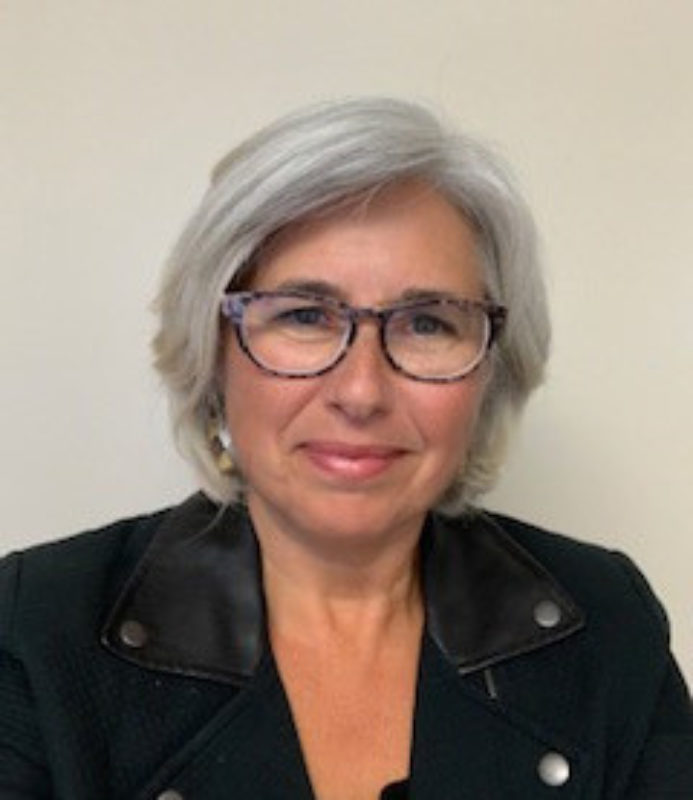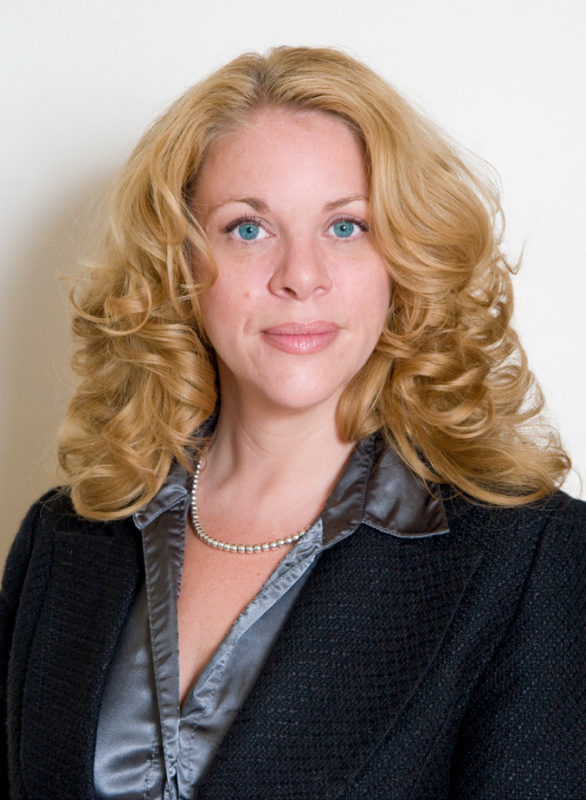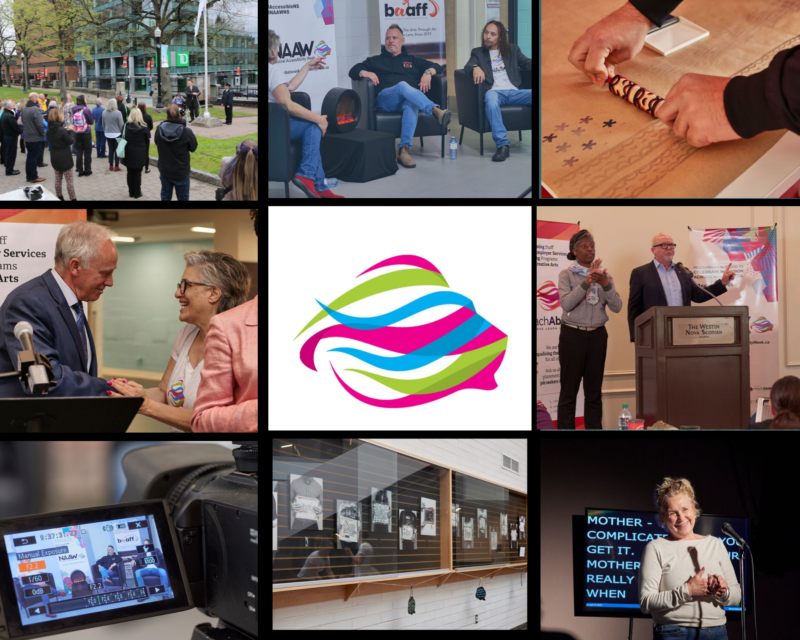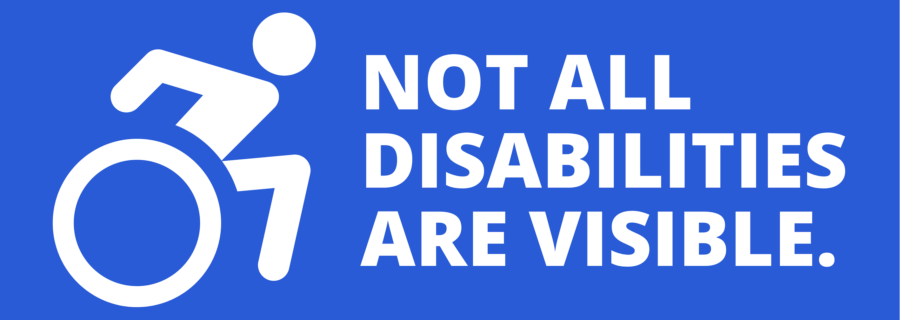Accessibility is as diverse as the range of human differences. The concept of being accessible is not reserved for people with assistive mobility devices: it’s much broader. Once this is understood, we, as a society, can make meaningful changes in becoming truly inclusive.
Persons with disabilities have diverse needs when trying to access all facets of their everyday life. That means we need to think beyond wheelchairs signs and deeper about what they attempt to symbolize.
“There is a tendency for most people to think when we talk ‘disability’ that it has to do with mobility. Even the symbol on door openers is a wheelchair; we all understand what it means, but it really is much bigger than that,” says Rosalind Penfound, Accessibility Advisory Board Chair for the Department of Justice.
“It's about people who have visual impairments, blind, deaf and hearing impaired, and neurodivergent folks. When you think about all these disabilities, you start to understand how diverse accessibility really is.”
“Accessibility is an individualized ability to access, directly or indirectly, environments, services, products and employment,” says Tanya Sieliakus, Founder and CEO of HR Pros Inc.
Thinking this broadly and inclusively about accessibility pushes the boundaries of building ramps or setting up automatic washroom doors¬ to meet certain widespread accessibility standards. It’s about celebrating and valuing persons with disabilities. It’s about enabling them to fully participate in all parts of society.
“I think in business too often the discussion around accessibility is a function of pain; whether it be labour shortage, an inability to hire qualified people, public scrutiny or persons with disabilities being physically unable to enter a building or room,” says Sieliakus.
“What we need instead is a radical change in conversation! We really need to start talking about disability in terms of inclusion.”
Shattering stereotypical attitudes
Living with a neurological condition for over 18 years, Sieliakus only claimed her disability recently. “Disclosure of my condition early-on cost me my job, left me with chronic depression and nearly destroyed me,” she says.
Finding her courage and publicly claiming her disability has allowed Sieliakus to have open and honest discussions, breaking down stereotypes that otherwise would have gone unexplored.
“Disability is an uncomfortable topic for many and as long as ‘disability’ remains an uncomfortable topic perhaps the greatest barrier is the, often unspoken, judgment people pass about people with disabilities,” says Sieliakus. “Judgement such as not being good enough, being less than, being too much, more than, etc."
“Everyone faces barriers, hardships and difficulties in one time or another,” says Dawn Stegen, Interim Executive Director, Accessibility Directorate, Department of Justice. “For persons with disabilities these barriers are related to the already built environment, but there are many others including those related to attitude, stereotyping and stigma.”
That's really where the education and the awareness is very important. And it's often the first place to start, and it’s the place where the journey begins,” says Stegen.

Expert recommend meaningful education and ‘osmosis’ as the first steps. From a foundational approach, education addresses issues such as bias and stigma. At the same time, it teaches the importance of equalizing the playing field, including workplaces. It essentially teaches how to be welcoming of everyone.
“Osmosis means exposing people to different cultures, types of humans, and accessibility and accommodation requirements, because that's how we're going to remove the stigma,” says Tova Sherman, CEO of reachAbility Association and author of Win, Win, Win! The 18 Inclusion-isms You Need to Become a Disability Confident Employer.
Most employers realize the importance of inclusion and diversifying their culture, because financially it has clear benefits. That includes creative problem-solving skills, fewer sick days taken, more ideas brought to the table, and endless opportunities for marginalized people with pressing issues to be included in the conversation.
We need to get a conversation going; we need to start talking about the unique things people with disabilities bring to the table, start demystifying ‘disability’ and stop stereotyping people with disabilities,” says Sieliakus.
Changing unfounded assumptions
Many jobs, previously assumed impossible to accomplish from home, were carried out from home over this past year due to pandemic restrictions. This now-rectified assumption used to prevent some people with disabilities from being able to apply for and get those jobs.
“Assumptions and attitudes like these have created situations where businesses are not as welcoming,” says Penfound. “We're learning as we go along; and I think that kind of revelation, as attitudes shift and we start understanding, is wonderful.”
“Disability as a whole has been treated as an add on, as another item HR has to deal with,” says Sherman, who shares key implementation principles in her book, ensuring businesses are on the path to profit and guiding leaders, co-workers and even customers towards inclusion.
“It is my belief that businesses need to go back to their values and ensure diversity is visible, so the staff and management from top down know it’s part of their core responsibility and role in the office.”
HR pros Inc. is great example of how the human resources field can make radical changes to inclusive hiring. “We are committed to assisting our clients in building inclusive workplaces and HR systems that value all persons,” says Sieliakus, a certified Diversity, Inclusion, and Equity (DEI) trainer who has been delivering DEI training and programming for more than 20 years in Canada, the United States and Europe.
And because volunteerism and corporate citizenship are pillars of HR pros Inc., the organization volunteers on a number of not-for-profit boards, such as TEAMWorks Cooperative, specifically servicing people with disabilities.

Focusing on inclusive solutions
“Inclusion is not something 'nice to do' or a mere concept or set of obligations, rather inclusion is a principle that enriches our lives,” says Sieliakus. “So step one is to get started!”
A high percentage of Nova Scotians are aware of the need to do better when it comes to accessibility, and they have a very positive view of that need– –according to the 2021 Atlantic Quarterly Omnibus Survey commissioned for the Accessibility Directorate. The randomized public opinion telephone survey of Nova Scotians aged 18 and over showed over half of Nova Scotians are interacting with someone with a disability. And with 30 per cent of Nova Scotians having a disability, these results show a significant opportunity for businesses to work with their consumers and potential employees.
“It’s a great opportunity for that market and potential growth to make an investment in being accessible,” says Stegen. “If I'm close to someone who cannot get in or doesn’t feel welcomed in a place of business, then I won't be going to that place of business myself.”
“You need to be thinking beyond the 30 per cent. Focus on its potential impact and the reaction of 80 per cent of Nova Scotians if you’re not a welcoming, accessible place of business.”
Businesses in Nova Scotia have access to resources to help them identify barriers in their business and employment practices. Leveraging these resources, while creating business strategies to overcome barriers, should be an integral part of any business planning for full accessibility.
Toolkits, guides and webinars can help businesses, organizations, municipalities and public sector bodies comply with the Accessibility Act– –ensuring everyone’s participation. For funding, the Business ACCESS-Ability Grant Program offers cost-shared grants to businesses for accessibility-related improvements. They’re intended to improve overall accessibility and create welcoming commercial environments that persons with disabilities can access for business as well as employment opportunities.
“We know the world is not going to change overnight, and all kinds of existing buildings were built in an era when we didn't think about accessibility,” says Penfound. “But we also know there are plans that can be made to retrofit those buildings and most importantly, as new work happens, these plans are built-in like Universal Design.”
Similar to when business communities are thinking about active transportation on their main streets, cyclists and pedestrians are brought in to be consulted. Businesses should follow the Nothing About Us Without Us principle and approach by “inviting persons with disabilities in their communities to be involved with their plans around accessibility,” says Stegen.
“If you're thinking about a change to the built environment, about your signage, wayfinding, or devices that could be used to make your place of business accessible to persons with disabilities, reach out and get their feedback. Let them experience the space and the ideas that you're thinking of.”
Next step is to get actively involved and engaged. Businesses should start preventing and removing barriers to create inclusive spaces.
To those businesses’ benefit, communities are starting to form committees to actively develop accessibility plans and begin implementation. These committees are an opportunity for businesses to get engaged, leverage their plans and be part of the solution.
“We believe businesses don't need to wait for the standards to be enacted,” says Stegen. “Starting to get involved and engaged before 2030 will be for all the right reasons and for human rights reasons.”
“And lastly, focus on something that may be a real opportunity but could also be a gap area in your business. Take that on, start to become an expert in it, see the changes and get excited about that momentum.”
Accessibility continues to be thought of in terms of a one-lane road. This specific lane– –whether it be physical, mental, emotional or intellectual disability– –is based on our own experiences when crossing paths with people living with disabilities.
Like different individual attributes, accessibility needs to be recognized beyond the boundaries of disability and inclusion. Our community needs to be committed to education, awareness raising and business planning.
These commitments don't have to be accomplished all at once. Being proactive about your business’ capacity for inclusion is crucial in fostering a truly supportive and welcoming environment.
“We can remove all the architectural barriers in the world, but the attitudinal ones remain,” says Sherman. “The number one step to be accessible is to tackle your attitudinal barriers, both consciously and unconsciously.”■

< Back to Articles | Topics: Responsible Business

